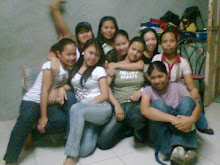Region two or CAR (Cordillera Autonomous Region), have the Five provinces namely; Apayao, Abra, Kalinga, Mt. Provinces, Ifugao and Benguet. Each provinces have different tribes; the Ibaloy, Isneg, Hudhud, Tingguian, Oggood, Sudsud, Ullalim. These tribes have their own characteristics and also they are popular or known for their very own litetary works, The tribe Ibaloy means the people who live in the houses. The Ibaloy people can be seen in the places of Baguio City and people here are the ethnic group. People here also have their skills in terracing mountain and planting them with rice, their habitat is mountainopus and rocky. The Ibaloy people have their social classes in the society; the baknang who is the wealthy class and abitug the poor. The baknang class has the authority over the abitug. Ibaloy built their houses far from one another. Isneg tribe lived in the place of kalinga apayao. Isneg were described as of slender and graceful structure, with manners that hospitable and generous,possessed with the spilt of self-reliance and courage and clearly artistic in their temperament. Their main staple food is rice, which they have traditionally produced in abundance. Apart from rice, they also have other crops rained; corn, taro, sweet potato, sugar cane for making basi. Women here are traditionally give birth in a kneeling position using a mushroom as a talisman to ensure a successful delivery. The umbilical cord cut with a bamboo sliver is mixed with the rest of the after birth tied up with the ginger and herbs and believed in a coconut shell under the house. Tingguian pagan people inhabiting in the interior hills of Abra. Hudhud, Agriculture is the main source of the people in Ifugao, they harvest rice and a variety of crops and vegetables, they also engaged in poultry raising, pottery, weaving and hunting. Among the Ifugao social classes are based on their possessions. Oggood, Bontoc is derived from two morphemes bun (heap) and tuk (top) together it means mountain. Bontoc term refers to the people of mountain province. The Bontoc people in this area known to have their own laws on welfare, including the making of peace facts. Their main agricultural products is rice, which there are two kinds; the chimacon, which is the superior variety and the pak-ang. Sweet potato and other crops like coffee, millet, beans, banana, persimmon, tangerines, cabbages carrots and cauliflowers are also produced. Bantoc people believe in the anitos or spirits of their ancestors and in spirits dwelling in nature, but they are essentially monotheistic. Sudsud, Kankanay’s are the third largest community in the mountain province. They have three types of practice in agriculture; slash and burn. Terracing for wet rice production and horliculture. Kankanay’s basic social unit is family. Kankanay villages are located near the headwater of a stream or river. Their three main house types are the binangiyan for the prosperous members of the community, the opa or inopa and ollas for the less well- off. Ullalim, the Kalinga’s are some of the major ethnic linguistic groups in habiting in Northern Luzon. Society classes are kapus (the lowest class) baknang (middle class) kadangyan (upper class). The Kalingga stand tall and are of Malayan heritage. In the past, they were feared for their head hunting activities.
Subscribe to:
Post Comments (Atom)

No comments:
Post a Comment